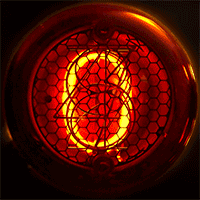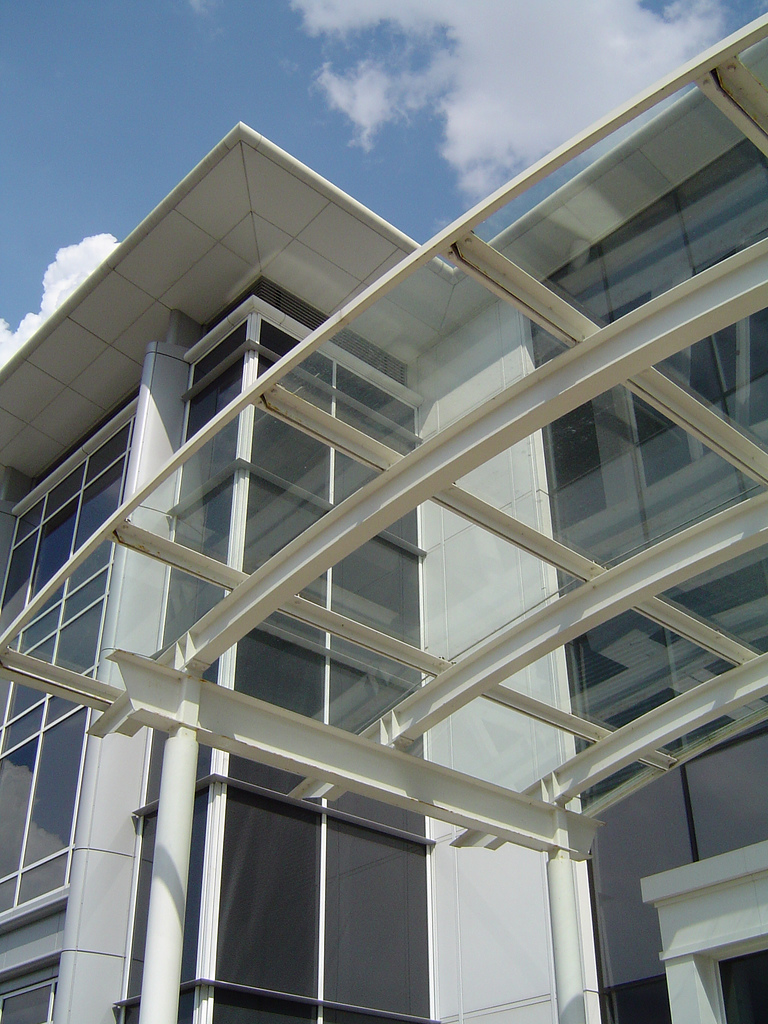|
LED Panel
A LED display is a flat panel display that uses an array of light-emitting diodes as pixels for a video display. Their brightness allows them to be used outdoors where they are visible in the sun for store signs and billboards. In recent years, they have also become commonly used in destination signs on public transport vehicles, as well as variable-message signs on highways. LED displays are capable of providing general illumination in addition to visual display, as when used for stage lighting or other decorative (as opposed to informational) purposes. LED displays can offer higher contrast ratios than a projector and are thus an alternative to traditional projection screens, and they can be used for large, uninterrupted (without a visible grid arising from the bezels of individual displays) video walls. microLED displays are LED displays with smaller LEDs, which poses significant development challenges. History Light-emitting diodes (LEDs) came into existence in ... [...More Info...] [...Related Items...] OR: [Wikipedia] [Google] [Baidu] |
Nick Holonyak
Nick Holonyak Jr. ( ; November 3, 1928September 18, 2022) was an American engineer and educator. He is noted particularly for his 1962 invention and first demonstration of a semiconductor laser diode that emitted visible light. This device was the forerunner of the first generation of commercial light-emitting diodes (LEDs). He was then working at a General Electric Company research laboratory near Syracuse, New York. He left General Electric in 1963 and returned to his alma mater, the University of Illinois at Urbana-Champaign, where he later became John Bardeen Endowed Chair in Electrical and Computer Engineering and Physics. Early life and career Nick Holonyak Jr. was born in Zeigler, Illinois, on November 3, 1928. His parents were Rusyn immigrants. His father worked in a coal mine. Holonyak was the first member of his family to receive any type of formal schooling. He once worked 30 straight hours on the Illinois Central Railroad before realizing that a life of hard labor ... [...More Info...] [...Related Items...] OR: [Wikipedia] [Google] [Baidu] |
Organic Light-emitting Diodes
An organic light-emitting diode (OLED or organic LED), also known as organic electroluminescent (organic EL) diode, is a light-emitting diode (LED) in which the emissive electroluminescent layer is a film of organic compound that emits light in response to an electric current. This organic layer is situated between two electrodes; typically, at least one of these electrodes is transparent. OLEDs are used to create digital displays in devices such as television screens, computer monitors, and portable systems such as smartphones and handheld game consoles. A major area of research is the development of white OLED devices for use in solid-state lighting applications. There are two main families of OLED: those based on small molecules and those employing polymers. Adding mobile ions to an OLED creates a light-emitting electrochemical cell (LEC) which has a slightly different mode of operation. An OLED display can be driven with a passive-matrix (PMOLED) or active-matrix (AMOLED) ... [...More Info...] [...Related Items...] OR: [Wikipedia] [Google] [Baidu] |
PopMart Tour
The PopMart Tour was a worldwide concert tour by rock band U2. Staged in support of the group's 1997 album ''Pop'', the tour's concerts were performed in stadiums and parks in 1997 and 1998. Much like the band's previous Zoo TV Tour, PopMart was an elaborate production. Its lavish stage design had a LED screen, a golden arch, and a large mirror-ball lemon. As with the Zoo TV Tour, the band delivered an image and performance that were ironic and self-mocking on PopMart, deviating from their earnest performances of the 1980s; the band performed in costumes that, along with the stage design, poked fun at the themes of consumerism and pop culture. The PopMart Tour spanned five legs and 93 shows, and took U2 to South America, South Africa and Israel for the first time. The tour was booked while the band were still completing ''Pop'', which was planned to be released during the 1996 holiday season. However, the recording sessions went long, delaying the release until March 1997 and ... [...More Info...] [...Related Items...] OR: [Wikipedia] [Google] [Baidu] |
Blue LED
A light-emitting diode (LED) is a semiconductor device that emits light when current flows through it. Electrons in the semiconductor recombine with electron holes, releasing energy in the form of photons. The color of the light (corresponding to the energy of the photons) is determined by the energy required for electrons to cross the band gap of the semiconductor. White light is obtained by using multiple semiconductors or a layer of light-emitting phosphor on the semiconductor device. Appearing as practical electronic components in 1962, the earliest LEDs emitted low-intensity infrared (IR) light. Infrared LEDs are used in remote-control circuits, such as those used with a wide variety of consumer electronics. The first visible-light LEDs were of low intensity and limited to red. Early LEDs were often used as indicator lamps, replacing small incandescent bulbs, and in seven-segment displays. Later developments produced LEDs available in visible, ultraviolet (UV), ... [...More Info...] [...Related Items...] OR: [Wikipedia] [Google] [Baidu] |
Nixie Tube
A Nixie tube ( ), or cold cathode display, is an electronic device used for displaying numerals or other information using glow discharge. The glass tube contains a wire-mesh anode and multiple cathodes, shaped like numerals or other symbols. Applying power to one cathode surrounds it with an orange glow discharge. The tube is filled with a gas at low pressure, usually mostly neon and often a little mercury or argon, in a Penning mixture. Although it resembles a vacuum tube in appearance, its operation does not depend on thermionic emission of electrons from a heated cathode. It is hence a cold-cathode tube (a form of gas-filled tube), and is a variant of the neon lamp. Such tubes rarely exceed even under the most severe of operating conditions in a room at ambient temperature. Vacuum fluorescent displays from the same era use completely different technology—they have a heated cathode together with a control grid and shaped phosphor anodes; Nixies have no heater or ... [...More Info...] [...Related Items...] OR: [Wikipedia] [Google] [Baidu] |
Digital Display
A display device is an output device for presentation of information in visual or tactile form (the latter used for example in tactile electronic displays for blind people). When the input information that is supplied has an electrical signal the display is called an ''electronic display''. Common applications for '' electronic visual displays'' are television sets or computer monitors. Types of electronic displays In use These are the technologies used to create the various displays in use today. * Liquid crystal display (LCD) ** Light-emitting diode (LED) backlit LCD ** Thin-film transistor (TFT) LCD ** Quantum dot (QLED) display * Light-emitting diode (LED) display ** OLED display ** AMOLED display ** Super AMOLED display Segment displays Some displays can show only digits or alphanumeric characters. They are called segment displays, because they are composed of several segments that switch on and off to give appearance of desired glyph. The segments are u ... [...More Info...] [...Related Items...] OR: [Wikipedia] [Google] [Baidu] |
LED Circuit
In electronics, an LED circuit or LED driver is an electrical circuit used to power a light-emitting diode (LED). The circuit must provide sufficient current to light the LED at the required brightness, but must limit the current to prevent damaging the LED. The voltage drop across an LED is approximately constant over a wide range of operating current; therefore, a small increase in applied voltage greatly increases the current. Very simple circuits are used for low-power indicator LEDs. More complex, current source circuits are required when driving high-power LEDs for illumination to achieve correct current regulation. Basic circuit The simplest circuit to drive an LED is through a series resistor. It is commonly used for indicators and digital displays in many consumer appliances. However, this circuit is not energy-efficient, because energy is dissipated in the resistor as heat. An LED has a voltage drop specified at the intended operating current. Ohm's law and Kirchho ... [...More Info...] [...Related Items...] OR: [Wikipedia] [Google] [Baidu] |
Integrated Circuit
An integrated circuit or monolithic integrated circuit (also referred to as an IC, a chip, or a microchip) is a set of electronic circuits on one small flat piece (or "chip") of semiconductor material, usually silicon. Transistor count, Large numbers of tiny MOSFETs (metal–oxide–semiconductor field-effect transistors) integrate into a small chip. This results in circuits that are orders of magnitude smaller, faster, and less expensive than those constructed of discrete electronic components. The IC's mass production capability, reliability, and building-block approach to integrated circuit design has ensured the rapid adoption of standardized ICs in place of designs using discrete transistors. ICs are now used in virtually all electronic equipment and have revolutionized the world of electronics. Computers, mobile phones and other home appliances are now inextricable parts of the structure of modern societies, made possible by the small size and low cost of ICs such as mode ... [...More Info...] [...Related Items...] OR: [Wikipedia] [Google] [Baidu] |
Hewlett-Packard Journal
''Hewlett-Packard Journal'' was a magazine published by Hewlett-Packard (HP) between 1949–1998. The first issue appeared in September 1949. Headquartered in Palo Alto, California Palo Alto (; Spanish for "tall stick") is a charter city in the northwestern corner of Santa Clara County, California, United States, in the San Francisco Bay Area, named after a coastal redwood tree known as El Palo Alto. The city was ..., it covered technical and product news from HP. The magazine was started as monthly, but then its frequency switched to bimonthly. It is available as web-pages - or as scanned and available on HPs home page as PDF downloads. References {{Reflist External links leapsecond.com: Time & Frequency Articles from ''Hewlett Packard Journal'' Bimonthly magazines published in the United States Monthly magazines published in the United States Defunct computer magazines published in the United States Hewlett-Packard Magazines disestablished in 1998 Magazines ... [...More Info...] [...Related Items...] OR: [Wikipedia] [Google] [Baidu] |
Research And Development
Research and development (R&D or R+D), known in Europe as research and technological development (RTD), is the set of innovative activities undertaken by corporations or governments in developing new services or products, and improving existing ones. Research and development constitutes the first stage of development of a potential new service or the production process. R&D activities differ from institution to institution, with two primary models of an R&D department either staffed by engineers and tasked with directly developing new products, or staffed with industrial scientists and tasked with applied research in scientific or technological fields, which may facilitate future product development. R&D differs from the vast majority of corporate activities in that it is not intended to yield immediate profit, and generally carries greater risk and an uncertain return on investment. However R&D is crucial for acquiring larger shares of the market through the marketisation ... [...More Info...] [...Related Items...] OR: [Wikipedia] [Google] [Baidu] |
HP Labs
HP Labs is the exploratory and advanced research group for HP Inc. HP Labs' headquarters is in Palo Alto, California and the group has research and development facilities in Bristol, UK. The development of programmable desktop calculators, inkjet printing, and 3D graphics are credited to HP Labs researchers. HP Labs was established on March 3, 1966, by founders Bill Hewlett and David Packard, seeking to create an organization not bound by day-to-day business concerns. The labs have downsized dramatically; in August 2007, HP executives drastically diminished the number of projects, down from 150 to 30. As of 2018, HP Labs has just over 200 researchers, compared to earlier staffing levels of 500 researchers. With the Hewlett Packard Enterprise being spun off from Hewlett-Packard on November 1, 2015, and renamed to and HP Inc., the research lab also spun off Hewlett Packard Labs to Hewlett Packard Enterprise and HP Labs was kept for HP Inc. History As the Semiconductor Lab's f ... [...More Info...] [...Related Items...] OR: [Wikipedia] [Google] [Baidu] |


.jpg)


.jpg)
